Sam Raimi's Army of Darkness marks the third and final entry in his original Evil Dead trilogy. Released in U.S. theaters on February 19, 1993, the film continues the comedic and cartoonish exploits of Ash (Bruce Campbell), a wise-cracking hardware store employee forced to fend off a horde of ghoulish Deadites when accidentally taken back to 1300 A.D. The only way Ash can return home safely is to obtain the hallowed Necronomicon, Book of the Dead.
Although the film is the lowest-rated film in Raimi's trilogy, Army of Darkness has garnered a rabid cult following over the past three decades and even became a cultural landmark of sorts. To this day, Army of Darkness remains not only Evil Dead's most famous entry, but is also one of the most quoted and referenced movies of its kind. As the film nears its 30th anniversary, here's a detailed look back at the production history.
10 Its Original Title Was Different
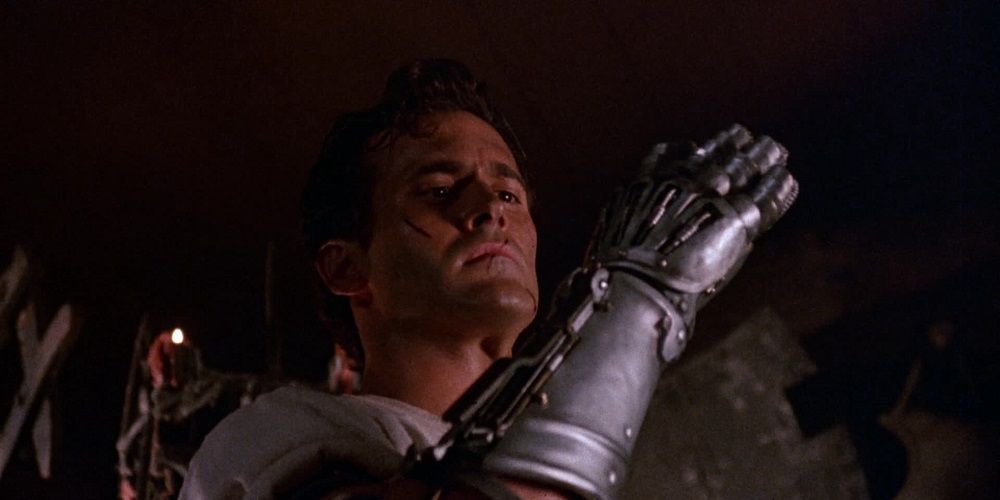
Army of Darkness began as a scant 43-page script which featured Ash (Bruce Campbell) having only one eye. Raimi wanted to name the film Medieval Dead, but Universal declined. When producer Irvin Shapiro came up with Army of Darkness, Raimi initially wanted to use it as a subtitle, i.e. Evil Dead 3: Army of Darkness.
Universal objected to that title as well, opting for a standalone title that could instead be enjoyed by viewers unfamiliar with the first two Evil Dead films. Though the film was finally named Army of Darkness, the UK DVD release still carries the subtitle tradition in Army of Darkness: The Medieval Dead.
9 Hannibal Lecter Accidentally Delayed Its Release
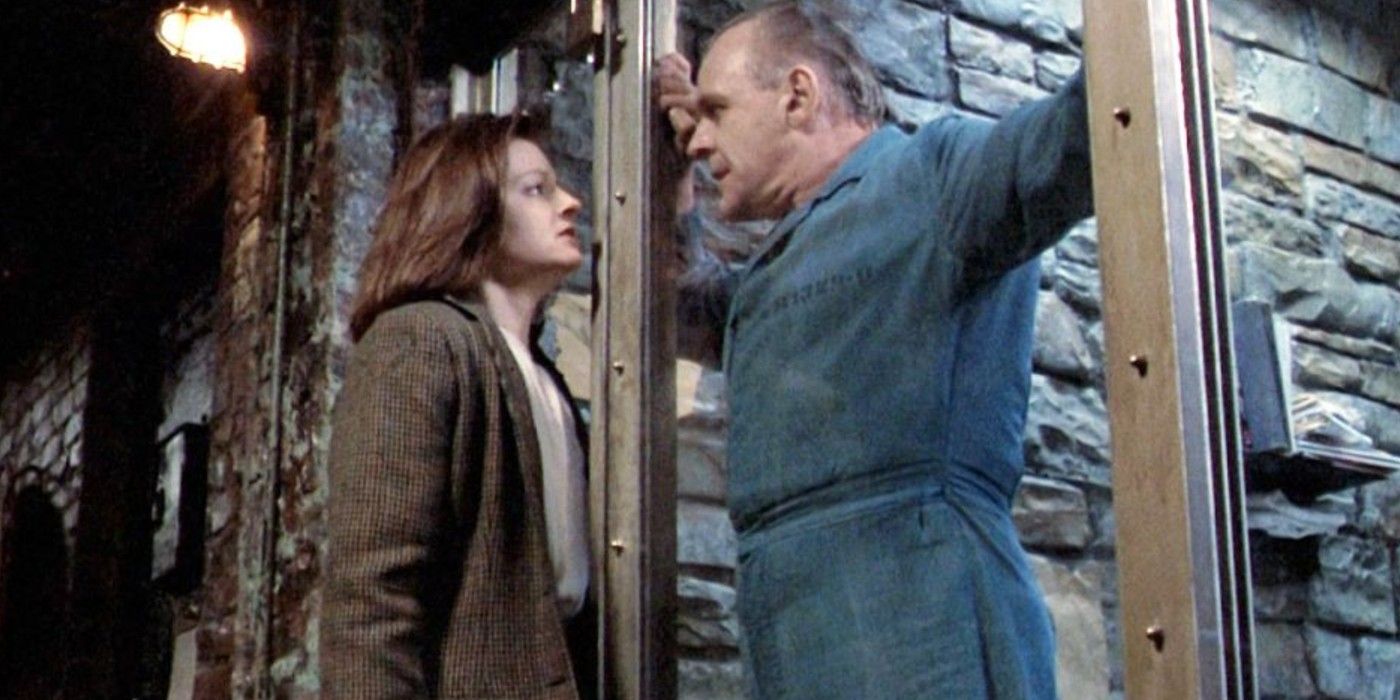
Filming on Army of Darkness lasted roughly 100 days in the summer of 1991. However, due to a seemingly unrelated dispute between Universal and producer Dino De Laurentiis, the film sat in the vault for well over a year.
While Universal took umbrage with Raimi's ending and ultimately re-edited the film prior to its release causing some delays, the original delay was due to a legal battle over the rights to the character Hannibal Lecter from The Silence of the Lambs. In the process, some of their joint releases were put on hold until the rights issues were resolved. Universal and De Laurentiis fought for over a year until the dispute was eventually settled.
8 Ash's Chainsaw Had A Hidden Mic In It
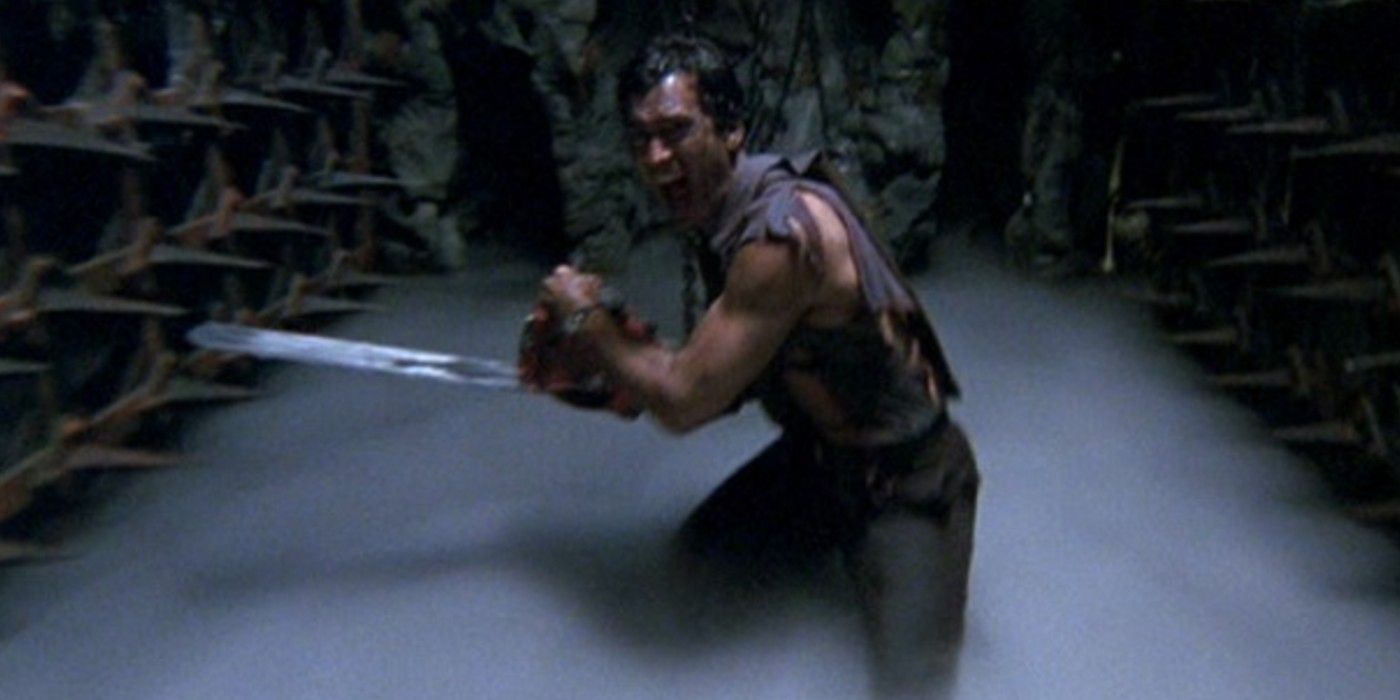
Most films employ a single camera, but Sam Raimi opted to shoot Army of Darkness with multiple cameras running simultaneously. This was done to capture as many wide shots and close-ups as possible without having to film master shots.
As such, the boom mic was held at a distance while Bruce Campbell wore wireless microphone transmitters hidden on his person. The mic was hidden in the pull-cord of his trusty chainsaw, while the transmitter was concealed inside Ash's shotgun holster.
7 The Falling Oldsmobile Totaled A Crane
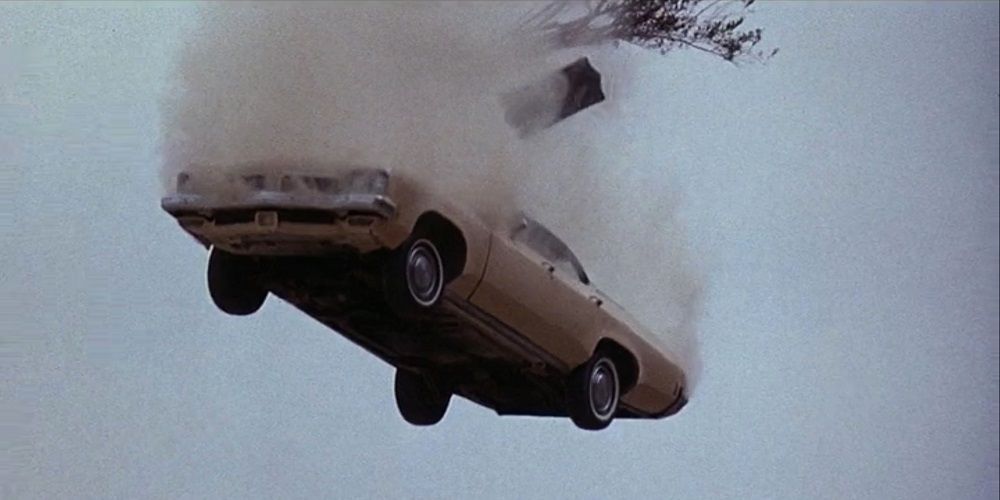
The 1988 Oldsmobile Delta seen in all of the Evil Dead entries personally belongs to Sam Raimi and appears in every single one of his films. For the scene in which the Oldsmobile falls from the sky, an 80-ton crane was used after a 25-ton crane accidentally crashed over a cliff.
In the first attempt to film it, the 25-ton crane suffered mechanical failure and fell over the edge of a cliff. Nobody was injured due to the lift-operator jumping out of the seat moments before it plummeted. An 80-ton crane was subsequently used to clean up the wreckage of the first crane, as well as to complete the shot as planned. The reshot footage, as well as images from Evil Dead II, are edited into the scene.
6 There's A Trunkful Of Easter Eggs
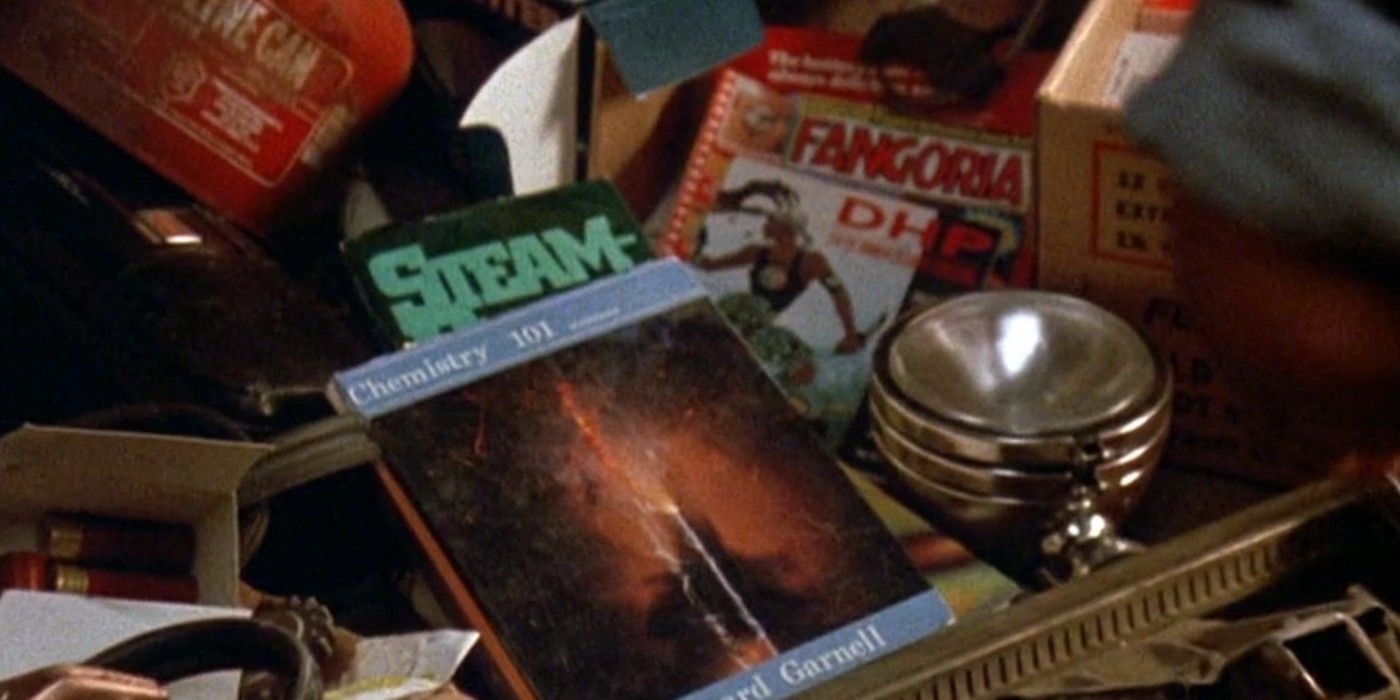
Speaking of Raimi's Oldsmobile, a slew of Easter eggs can be found inside the trunk of the vehicle. Many of the items really belong to Raimi himself and they are not paid product placements.
Among the cool things to be found inside the trunk is an issue of Fangoria Magazine, which helped launch Raimi's career by promoting Evil Dead. There is also an issue of Dark Horse Presents Fifth Anniversary Special comic, released in April 1991. There is also a chemistry textbook and a volume on steam power.
5 Sam Raimi's Family Have Cameos
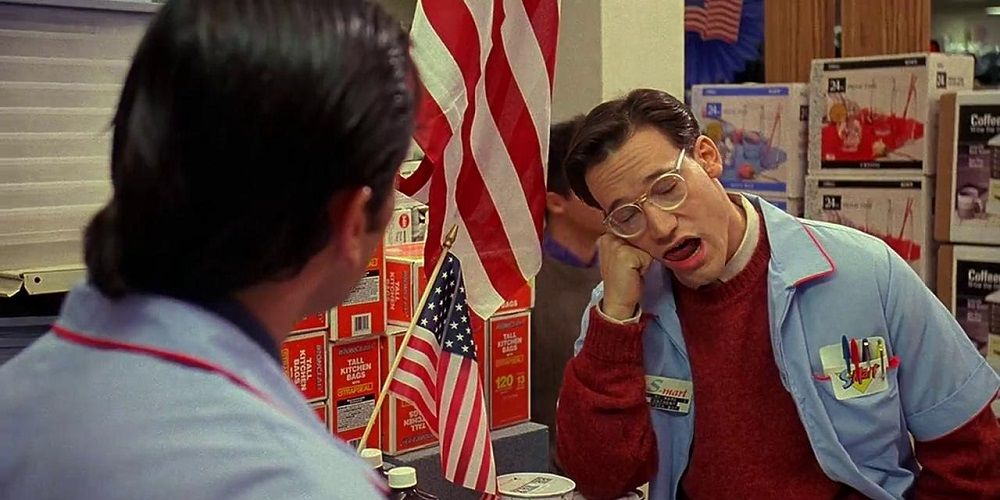
Army of Darkness was co-written by Sam Raimi's brother Ted who also happens to play, at minimum, four different characters in the film. Ted plays the frightened warrior desperate to stay alive, the eye-patched swordsman, the man who screams "you can count on my steel," and one of the store clerks at S-Mart.
As for other family members who appear in the film, the "Fake Shemp" characters are played by Bruce's Campbell's father Charlie, and brother Don. The others are played by fellow horror filmmakers William Lustig and Bernard Rose.
4 Filming The Pit Battle Was Complex
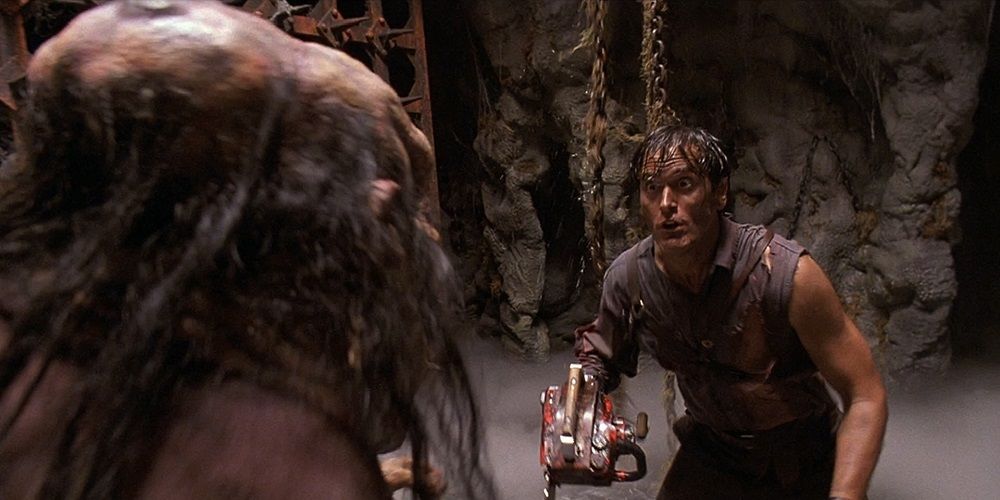
The iconic pit battle was originally conceived to feature just one Deadite monster. Raimi agreed to add the second, dubbed the Pit B*tch on set, after being frightened by one on set.
The battle sequence is comprised of shots taken from two different locations. The exterior of the pit was filmed in Polsa Rosa Ranch in Acton, California. The interior was filmed on a sound-stage on the backlot of Introvision Studios in Hollywood. The spikes of the pit-walls were made of foam and the pit-cave made from a pool two feet deep.
3 Bruce Campbell Suffered Some Injuries
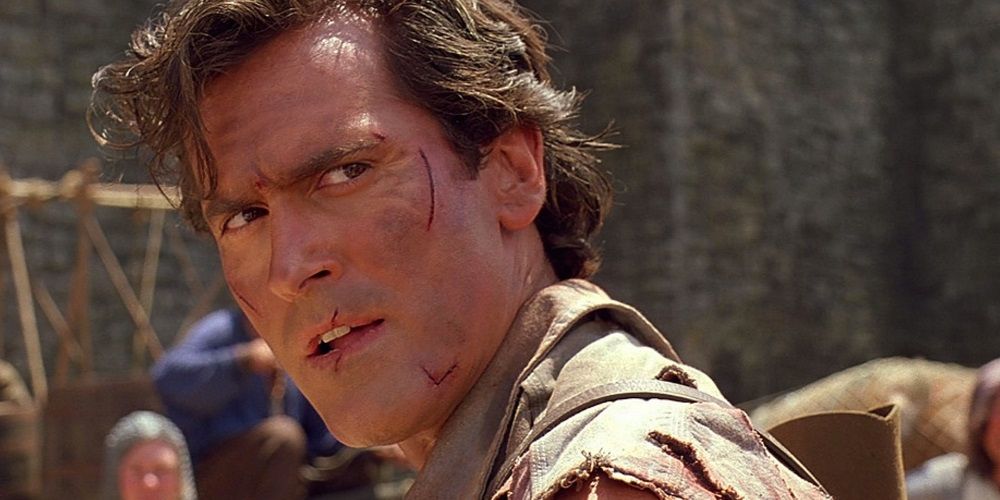
During the scene in which Ash is stoned with rocks, fake rocks were hurled at him. However, to elicit a genuine reaction of pain and annoyance from Ash, Raimi had potatoes thrown at his pal as well. The footage of Bruce's irritation about having a potato thrown at him made the final cut of the film.
Campbell also suffered a small facial wound during his climactic swordfight in Arthur's castle. A pin from his uniform sliced his chin during a stunt, prompting a visit to a local plastic surgeon. The doctor had to have the injury pointed out amid a faceful of gory makeup before treating Campbell and sending him back to the set.
2 There Are A Total Of 4 Different Cuts
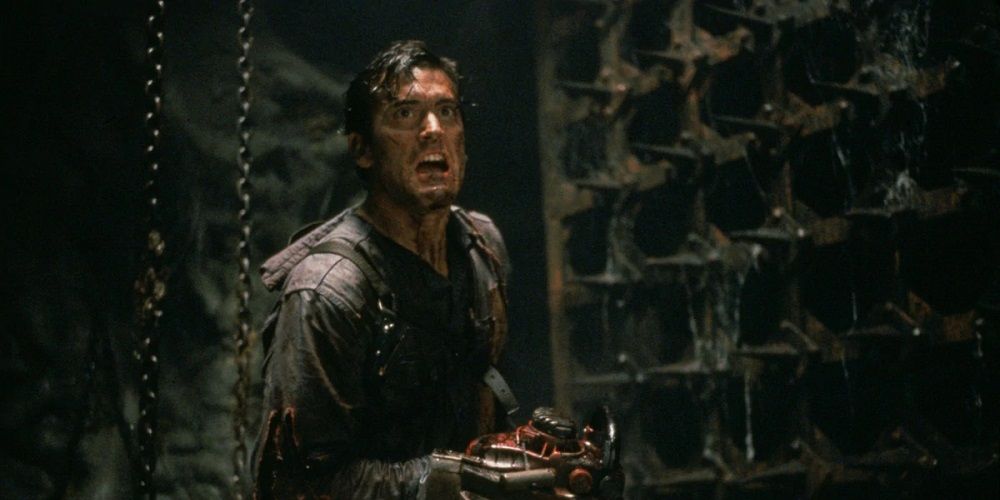
Army of Darkness has become notorious over the years for having four different versions released to the public. There is the U.S. theatrical edit, the European theatrical version, Director's Cut, and a U.S. television release.
Each version has different deleted and extended scenes, as well as footage reordered in various cuts. The version with most footage woven back into the film happens to be the U.S. TV edit. All four versions were compiled in a box-set released in the U.S. and Germany.
1 The Original Ending Was Deemed Too Dark
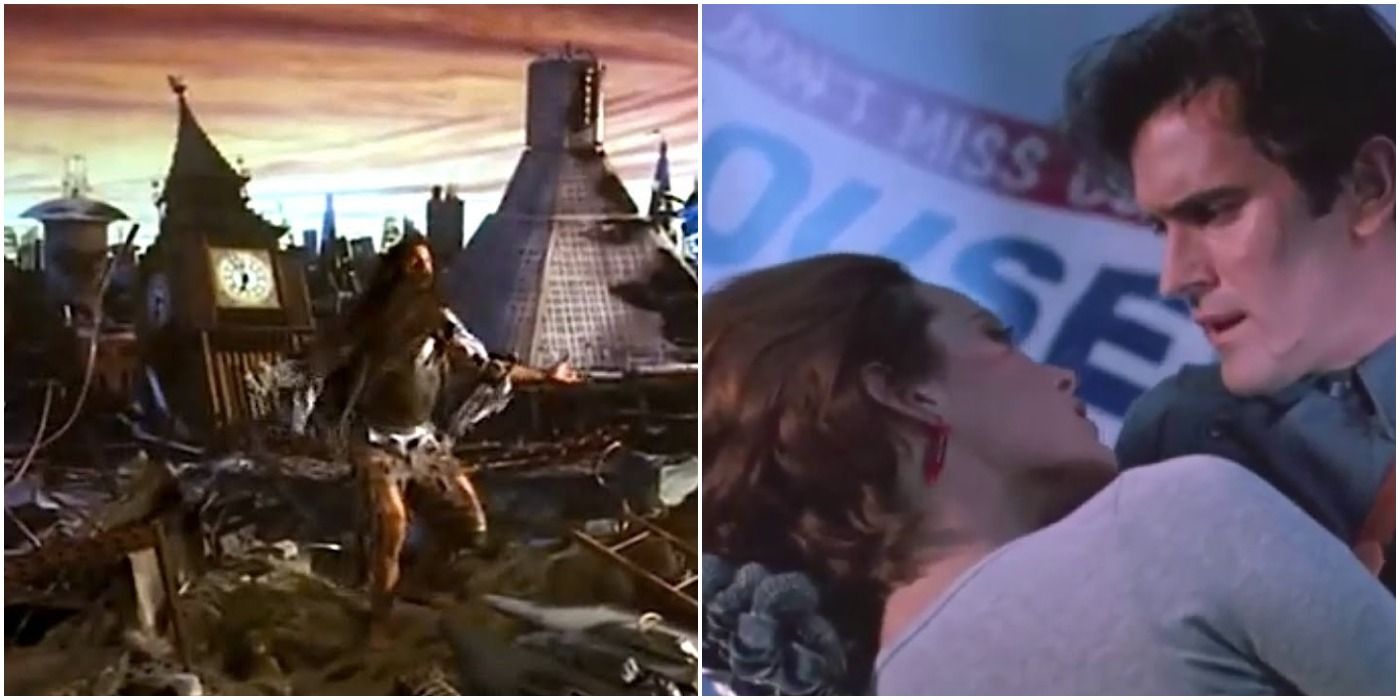
As alluded to above, one of the major reasons Universal re-edited the film prior to release was their displeasure over Raimi's original ending. The movie was supposed to end with Ash returning to his normal timeline, only to wake up hundreds of years later and in a post-apocalyptic England.
When the ending was deemed too much of a downer, the ending was reconceived to feature a supermarket shootout with Ash getting the girl in the end. While both endings were released (the shootout theatrically, the post-apocalypse in the Director's Cut), the 2015 spinoff series Ash Vs. Evil Dead honors both by beginning with Ash still working at the S-Mart before building up to the Deadite apocalypse.
from ScreenRant - Feed https://ift.tt/346qsio

0 Comments